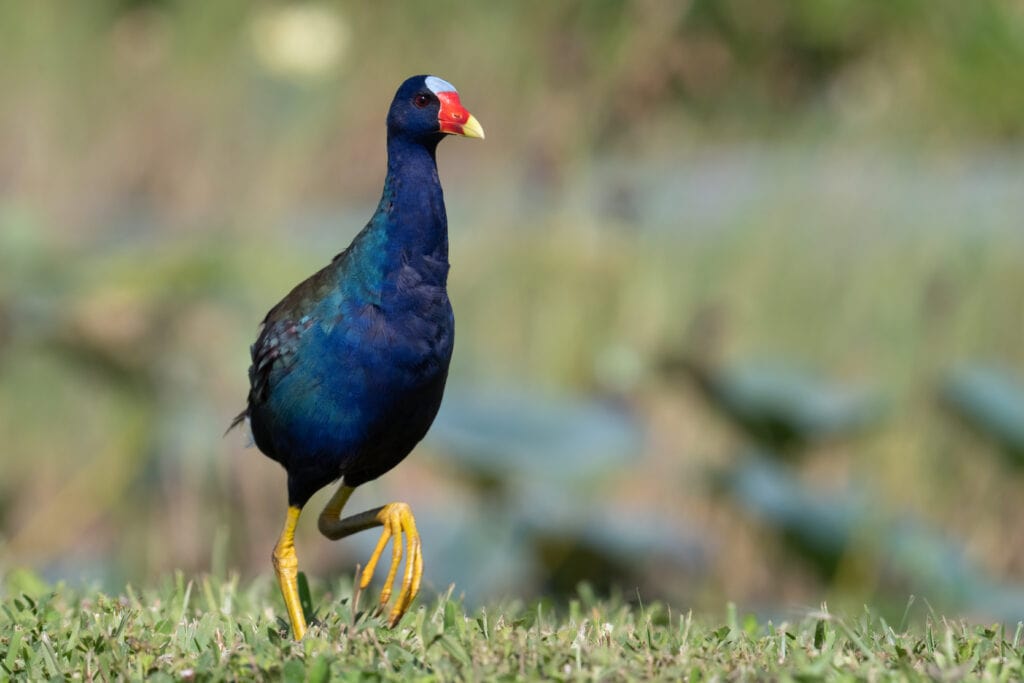Known as “moorhens” or “swamp chickens,” Gallinules are relatively common marsh birds throughout much of the Americas. Although much less gregarious than some of the other waterfowl with whom they share their habitats, Gallinules are still spotted by birders often, thanks to their distinctive features, including a white “racing stripe” and a bright red bill with a red “frontal shield” over parts of the face. To the uninitiated, the Gallinule may look like a sort of mismatched bird. They wade like herons, step over the water and onto floating vegetation like rails, dabble like ducks, resemble coots, but eat an omnivorous diet which overlaps with many of these birds. In essence, the Gallinule is a swamp specialist.
As mentioned above, these birds are capable of stepping onto floating vegetation. This is thanks to their wideset toes which lack the webbing and lobes that waterfowl often have. Gallinules trade in some of the swimming prowess that webbing provides in exchange for long thin toes which allow them to step onto soft mud or floating debris without sinking. They are still proficient swimmers, but this extra ability gives them the upper hand in marshy environments that are thick with mud and floating reeds. What’s more, Gallinules are not only capable of dabbling, as ducks do, but they are perfectly equipped for swimming and even occasional diving. (1)
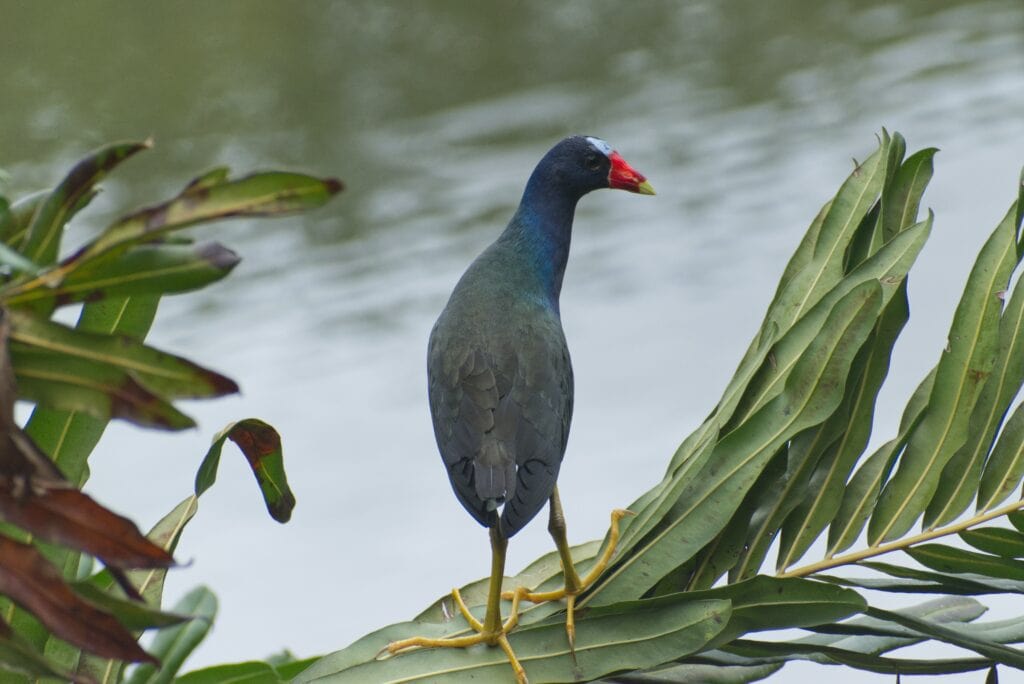
Culturally important, especially to the people of Hawaii, the Gallinule is clearly much much more than it looks to be. Beautiful but strange, Gallinules represent the wild majesty of the shrinking wetlands and the incredible creatures that rely upon these habitats to live and thrive. In this article, we’ll take a closer look at the Gallinule as well as the myths and legends surrounding this spectacular bird.
Gallinule Symbolism and Meaning
The Gallinule represents the wetlands. Like so many other waterfowl and wading birds, the Gallinule is perfectly adapted to the richly biodiverse environment of wetland habitats. Although the Gallinule remains fairly common, it has still suffered from marked declines as wetland habitats have receded and disappeared. The Gallinule symbolizes the beauty and importance of the wetlands and the fascinating animals which depend upon the continued preservation of these environments. (2)
Gallinules may represent precociousness or preparedness. Gallinule chicks are able to swim almost immediately after hatching. They are also born with spurs on their wings which help them climb onto the vegetation that forms Gallinule nests. Within just three weeks of hatching, most Gallinule chicks are capable of finding food by themselves. So, the Gallinule may represent resourcefulness, growth, or maturity. (3)(4)
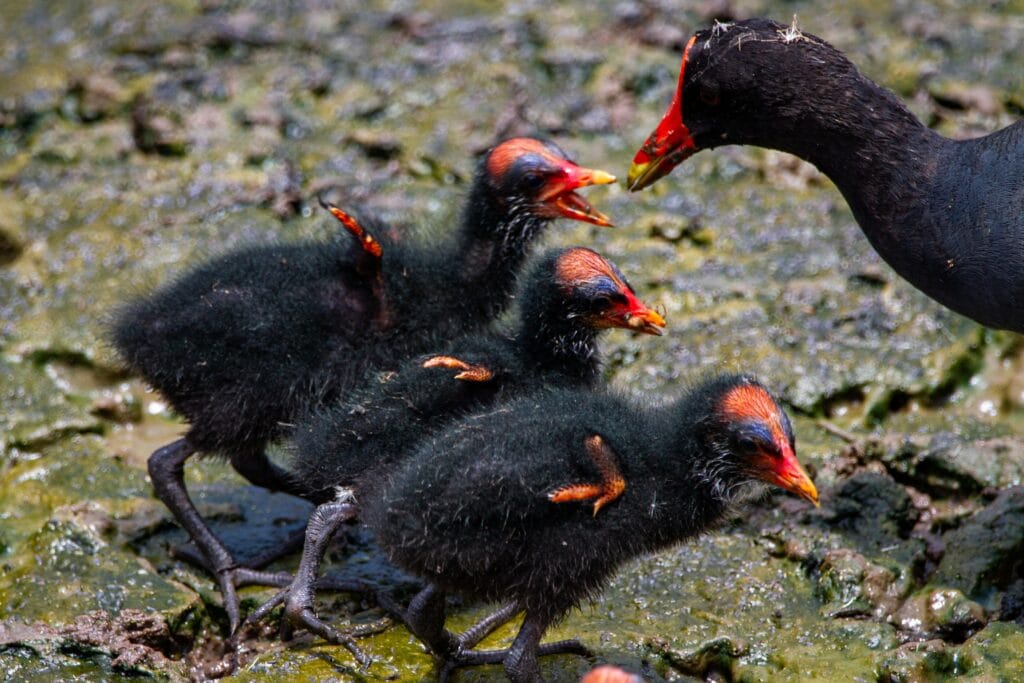
Gallinules may also represent family. Gallinules often mate for life and are known to form cooperative bonds with their family members. Mother and daughter Gallinules may share nests and raise their young in tandem. Furthermore, young Gallinules who have not yet found a mate will often stay near their parents and assist in rearing the next generation of little Gallinule siblings, even brooding or feeding newborn chicks as needed. So, the Gallinule may represent cooperation, family, and support. They may symb6olize the mindset of “it takes a village.” (5)
Gallinules may also represent the idea of specialization and utilizing one’s strengths. Although they may look strange, the Gallinule’s giant feet with their long spindly toes are perfectly adapted for handling the Gallinule’s specific needs and the marshy environments in which these birds are found. Thus, the Gallinule can be a great reminder to embrace one’s talents and be resourceful. Even if a talent seems strange or useless, the little ways in which we adapt to our circumstances often end up becoming or greatest strengths.
Gallinule Native American Symbolism
Gallinules are close relatives of coots, which they resemble pretty closely. Although they lack the odd lobed feet for which coots are known, Gallinules are otherwise quite similar to these duck-like waterfowl. While I could not find a source indicating a specific role for the Gallinule in Native American mythology, the coot has a rather important role in some versions of a very common Native American myth. The coot is sometimes thought of as the titular “Earth-Diver” in the Earth-Diver myth. According to this legend, the whole world was once a primordial sea. Then, the creator noticed some mud beneath the water. One by one each of the animals were asked to fetch some mud for the creator. In some versions, each animal refuses. In other versions, several animals try but they each fail in turn. From the muskrat to the grebe to the coot, there are a select few animals which take on the role of “Earth-Diver” in this story. The coot, or whichever animal fills this role in their respective versions, is the only animal to successfully fetch the mud. The creator fashions the mud into the earth and the coot is praised for its courage and determination. (6)
Gallinule Christianity Symbolism
The Gallinule is neither present in the Bible nor is it the subject of significant biblical symbolism. Like all birds, though, it may be seen as a reminder of the gift of creation and the incredibly majesty of the natural world as set forth by God.
Gallinule Celtic Symbolism
Birds, in Celtic myths, are usually connected with the idea of the supernatural Celtic “Otherworld.” The Otherworld is very much associated with transitions and so aquatic birds are especially connected with this idea because of their ability to transition between the water and land.
Gallinule in Dreams
Dreaming of a Gallinule may reflect one’s feelings towards their family. Dreaming of a successful Gallinule nest filled with chicks may indicate that one feels supported, loved, and accepted.
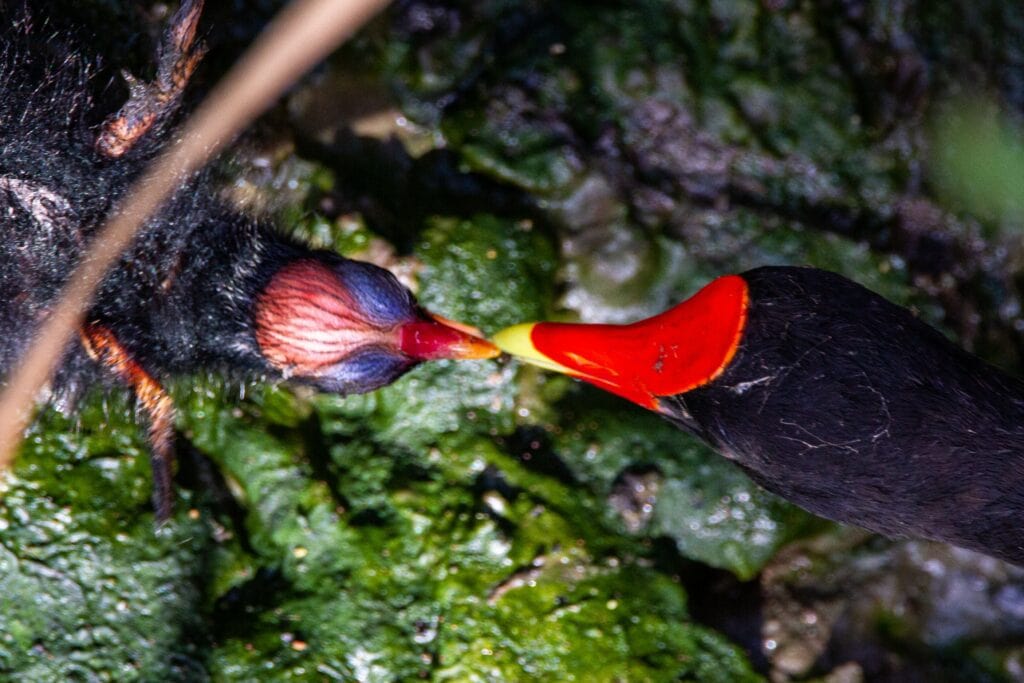
Dreaming of a lone Gallinule, or especially a lone Gallinule chick, may indicate a feeling of abandonment or isolation. While Gallinule chicks are equipped to face the world from a very young age, they still need their families and may choose to stay with them for long after they have grown old enough to strike out on their own.
Gallinule Encounters and Omens
While Gallinules are relatively common, they are also quite secretive. Encountering a Gallinule can be a very special experience. Encounter with Gallinules may represent balance or adaptability.
Like the Gallinule who steps lightly atop floating debris, a Gallinule encounter may remind you that balance is the key to staying on top of things. With a clear head and balanced priorities, you can avoid sinking into life’s muddy swamps.
Gallinule in Mythology & Folklore
In the following section, we’ll cover a few mythological traditions which feature Gallinules or their close relatives.
Native American Mythology:
As discussed above, the coot, a close relative of the Gallinule, is often cast as the “Earth-Diver” within the Earth-Diver myth. In one specific instance of this, the coot is enlisted by the trickster hero Coyote to save the world. In this version, rather than inventing the world from the primordial waters, Coyote is tasked with retrieving the world after it has been submerged by a great flood. Each animal, including Coyote himself, tries and fails to retrieve the mud to recreate the land. Then, the coot is sent down into the flood. The coot narrowly succeeds and the land is free from the flood once more. (7)
Hawaiian Mythology:
Alae Ula means “burnt forehead.” It is the Hawaiian name for the Hawaiian Gallinule, a species which bares major cultural significance for the people of Hawaii. The Alae Ula has been worshipped as a deity and is the subject of a number of myths, mostly surrounding the acquisition of fire by mankind. “burnt face” likely comes form the Gallinule’s red face plate. In many stories, this plate is said to have originated from a burning incident during the story of the acquisition of fire. (8)
According to one version of the legend, Maui was hungry one day and grew envious of the volcano gods who feasted upon cooked food. He followed the smell of cooked food until he found a grove where a family of Alae, who were secretive volcano spirits, feasted around a fire. Ravenous, Maui snatched their food and ate it. Then, wanting to share the bounty with humanity, he captured one of the Alae and asked her how to use fire. The Alae would not tell him, so Maui rubbed her head raw until it was red and featherless. Then she gave up the secret and Maui brought fire to mankind. (9)
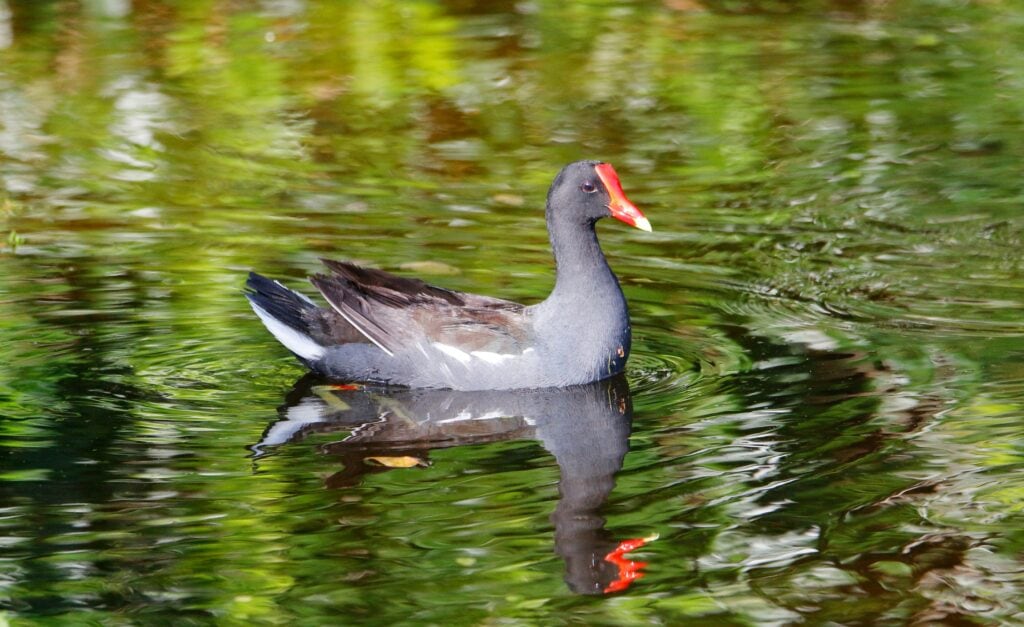
Another, similar, version of the myth suggests that Maui and his brothers tried in vain to capture the Alae and learn the secret of fire. One day, Maui and his brothers came up with a surefire plan to finally capture the Alae. They created dummies in the shape of people and loaded them onto their canoe. When they saw this, the Alae birds believed that Maui was out fishing and that they were safe from him. They began making their cooking fire and Maui used this opportunity to capture one and force it to reveal the secret of fire. Just like the previous story, the Alae’s red face is the result of a punishment that Maui doles out when the bird refuses to reveal the secret when simply asked. (10)
Further versions of this story replace Maui’s brothers with his four sons, however the plot points remain similar. In almost all versions, Maui must trick or trap the Alae. The Alae refuse to tell him how to obtain fire, and sometimes trick him into trying methods that do not work. Then, Maui intimidates the Alae who finally reveals the secret of fire. As punishments, the head of the Alae is burned or wounded. (11)
Although I cannot find a primary source for this, many secondary sources cite the existence of an alternate version of this myth. In the alternate version, the Alae is said to be the hero who brings fire to the people from the realm of the gods. This version of the myth sees the Alae burned by accident as a result of its own selfless act. (12)
Gallinule Spirit Animal
If your spirit animal is the Gallinule then you are likely thoughtful and reserved. Fiercely independent, yet happy to embrace the support of others, the Gallinule spirit animal is a special sort of introvert which thrives in the company of a select few people but which prefers solitude over unsupportive or unconstructive company.
People with the Gallinule spirit animal are often “old souls” who mature quickly and may find themselves ahead of their peers emotionally.
Gallinule Totem Animal
The Gallinule totem animal is associated with adaptability. Built to handle swamps and wetlands, the Gallinule reminds us that we are the products of our environments. In order to grow, we must embrace the challenges that our environments set forth and find ways to rise above them. This is how we grow into stronger, better people.
Gallinule Power Animal
The Gallinule power animal is connected with balance. People with the Gallinule as their power animal live happier and healthier lives because they understand the importance of keeping all aspects of their life in perfect harmony. Ambitious, yet family-oriented, easy-going, yet motivated, the Gallinule moves through life with a sense of balance that allows it to rise above petty problems and tackle the things that really matter.
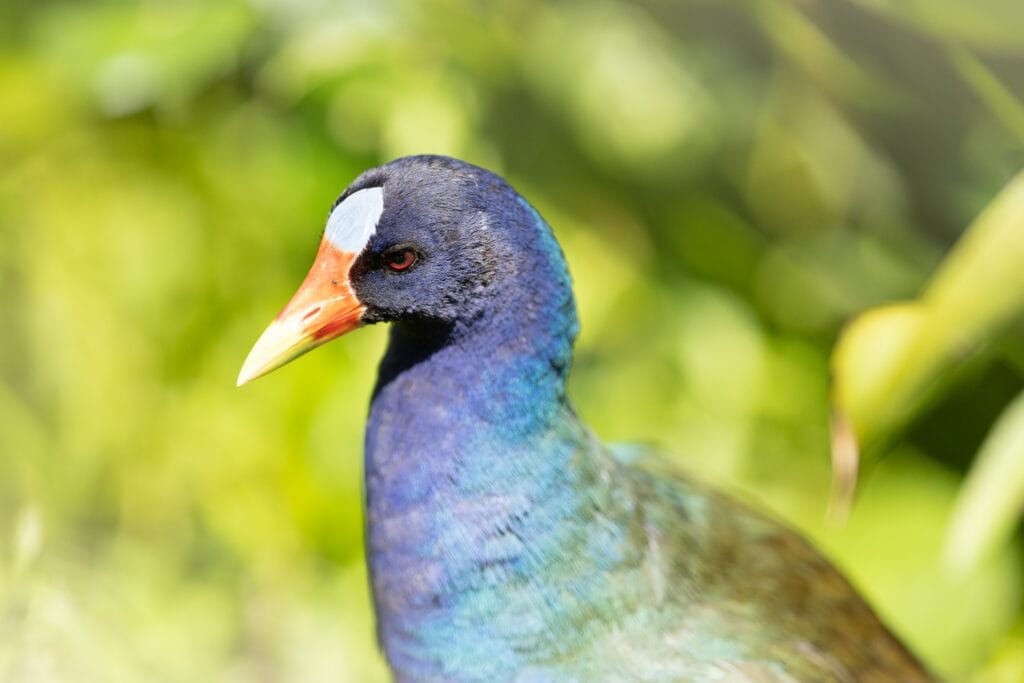
Gallinule Tattoo Meaning
A Gallinule tattoo may represent family, maturity, insight, or balance. For somebody of Hawaiian descent, such a tattoo may hold additional significance. It may represent the myth of Maui and the Gallinules or it may even represent Alae as a deity connected with fire.
Conclusion
From a volcanic god which brings fire to mankind, either begrudgingly or willingly, to the source of the lands of the earth itself, to a striking symbol of the value and beauty of the wetlands, the Gallinule wears many hats. In each of these roles, the Gallinule is a striking bird whose unique attributes allow it to stand out from the crowd. While it may lack the immediate popularity of an eagle or a bluebird, the Gallinule is bird which richly deserves to be recognized for its beauty and its talents.

